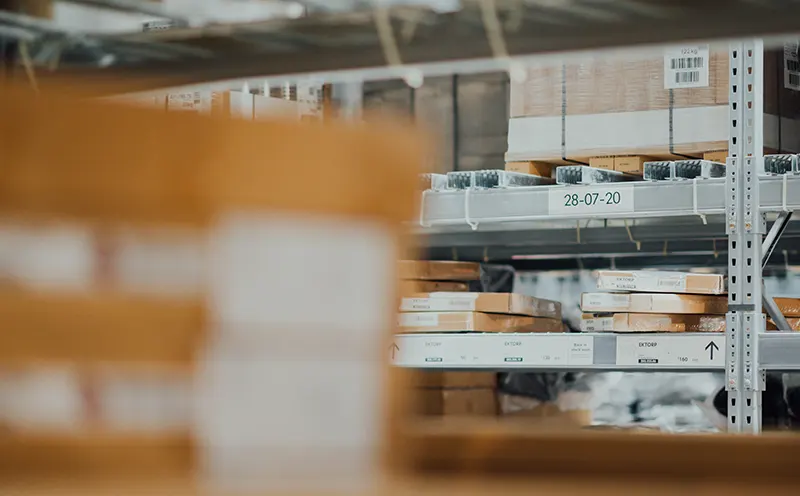In supply chain management, understanding and managing stockout costs is paramount to the success of a business. Stockout costs refer to the financial impact incurred when a company experiences inventory shortages and cannot meet customer demand.
This article delves into the concept of stockout costs, exploring their causes, consequences, and strategies to mitigate their effects. By gaining insights into the significant implications of stockouts, businesses can develop proactive measures to minimize stockout occurrences and optimize their supply chain operations.
What Are Stockout Costs?

Stockout cost refers to the financial impact or loss incurred by a company when it runs out of inventory or fails to meet customer demand due to insufficient stock levels. It represents the costs of inadequate products to fulfill customer orders or maintain regular production.
Several components contribute to stockout costs. Firstly, there is the opportunity cost of lost sales and potential revenue. Customers who cannot purchase the desired products may turn to competitors, resulting in immediate revenue loss and potential long-term customer dissatisfaction.
Secondly, stockouts can increase costs for expedited shipping, rush production, or emergency procurement to fulfill orders. These additional expenses can significantly impact profitability and erode profit margins.
Furthermore, stockouts can disrupt production schedules and lead to inefficiencies. If a company relies on specific components or raw materials unavailable due to stockouts, it can result in delays, increased lead times, and increased production costs.
Companies implement various strategies to mitigate stockout costs, such as effective inventory management practices, demand forecasting, safety stock levels, and establishing strong supplier relationships. By carefully monitoring and managing inventory levels, companies can minimize the risk of stockouts and mitigate the associated costs.
How To Calculate Stockout Costs?
Calculating the cost of stockouts requires consideration of several factors that contribute to the financial impact on a company. Here are the steps involved in estimating stockout costs:
Step 1: Lost Sales Revenue
Determine the potential sales revenue that would have been generated if the stockout had not occurred. This can be calculated by multiplying the product’s unit price by the quantity not sold due to stockouts.
Step 2: Potential Future Sales Loss
Assess the long-term impact of stockouts on customer loyalty and future sales. Estimate the potential loss in repeat business and calculate the value of these lost sales over a specified period.
Step 3: Expediting Costs
If the company incurs additional expenses to expedite orders or restock inventory to fulfill customer demands, these costs should be included in the calculation. This may involve rushing shipping fees, overtime labor costs, or premium procurement charges.
Step 4: Production Delays and Disruptions
Evaluate the cost of production delays or disruptions caused by stockouts. Consider the impact on production schedules, overtime labor expenses, penalties for late customer delivery, and any additional costs incurred to rectify the situation.
Step 5: Brand Reputation and Customer Loyalty
Assess the potential long-term impact on the company’s brand reputation and customer loyalty. Quantify the cost of negative word-of-mouth, decreased customer satisfaction, and the possible loss of future business.
By aggregating these factors, businesses can estimate the total cost of stockouts. It is important to note that accurately quantifying stockout costs can be challenging, as it requires analysis of both tangible and intangible factors.
What Causes Stockouts?

Stockouts can be caused by various factors within a supply chain. Here are some common causes:
1. Inaccurate Demand Forecasting
Incorrectly estimating customer demand can lead to stockouts. Insufficient inventory levels are maintained if demand is underestimated, resulting in stockouts when customer orders exceed available stock.
2. Poor Inventory Management
Inadequate inventory control and management practices can contribute to stockouts. Inefficient replenishment processes, inaccurate inventory tracking, or lack of visibility into stock levels can lead to stockouts when inventory is not adequately replenished promptly.
Inventory Management: The Nitty Gritty Reality of E-Commerce
Inventory management is the process of keeping track of all the goods your company has in stock. Learn more about…
3. Supply Chain Disruptions
Disruptions in the supply chain, such as shipment delays, production issues, or supplier problems, can lead to stockouts. Supply chain disruptions can result in inventory shortages and stockouts if the necessary components or finished products are unavailable.
4. Seasonal or Promotional Spikes
Fluctuations in demand during peak seasons or promotional periods can strain inventory levels and lead to stockouts. If demand surges beyond expected levels, companies may struggle to meet the increased demand with existing stock levels.
5. Inefficient Replenishment Processes
Inefficient or delayed replenishment processes can contribute to stockouts. Delays in placing orders, processing purchase orders, or inadequate communication with suppliers can result in stockouts when inventory is not replenished in a timely manner.
How Does A Stockout Affect Your Business?
A stockout can have significant negative impacts on a business across various aspects of its operations:
1. Lost Sales and Revenue
The immediate and most apparent impact of a stockout is lost sales. When customers are still looking for the desired product due to stockouts, they may choose alternative brands or competitors, resulting in immediate revenue loss. This can lead to missed growth opportunities and a decline in market share.
2. Damaged Customer Relationships
Stockouts can erode customer trust and satisfaction. Frustrated customers may perceive a lack of reliability or incompetence, damaging the company’s reputation. Negative experiences can lead to decreased customer loyalty, reduced repeat business, and a higher likelihood of customers sharing their dissatisfaction through word-of-mouth or online reviews.
3. Increased Costs
Stockouts can incur additional costs for the business. Rushing to replenish inventory or expedite orders to meet customer demands can result in higher shipping costs, overtime wages, or penalties for late deliveries. Moreover, maintaining stockouts for extended periods may require additional marketing or promotional efforts to regain customer trust and attract them back to the brand.
4. Disrupted Operations and Efficiency
Stockouts can disrupt internal operations. Production schedules may be affected, leading to downtime, inefficient resource allocation, and increased labor costs. The time and effort spent managing stockouts can divert attention and resources from other critical business activities, hampering overall efficiency.
5. Long-Term Business Impact
Beyond the immediate consequences, stockouts can have long-term effects on a business. Customers who have experienced stockouts may develop a negative perception of the brand, impacting future purchasing decisions. It can take significant effort and resources to rebuild trust and regain lost customers.
How to Avoid Stockouts

To avoid stockouts, businesses should implement effective strategies throughout their supply chain processes. Firstly, accurate demand forecasting is crucial. Businesses can estimate future demand more accurately by analyzing historical sales data, market trends, and customer behavior. This helps maintain optimal inventory levels to meet customer needs without excessive stock buildup or stockouts.
Next, businesses should establish strong relationships with suppliers. Collaborative partnerships can ensure timely deliveries, reduced lead times, and better visibility into the supply chain.
Implementing robust inventory management systems is vital. Leveraging technology, such as inventory management software, can provide real-time visibility into stock levels, sales data, and order fulfillment. This enables businesses to proactively identify and address potential stockouts.
Maintaining safety stock levels is essential as well. Safety stock is a buffer to cover unexpected demand or supply disruptions fluctuations.
Monitoring key performance indicators (KPIs) is crucial for proactive stockout prevention. Tracking metrics such as stock turnover, order fill rate, and lead times helps identify potential issues and areas for improvement in the supply chain.
Finally, businesses should continuously monitor and analyze their supply chain performance. Regularly reviewing and adapting strategies based on data and market changes ensures that stockouts are minimized and that the supply chain remains efficient and responsive to customer demands.
Conclusion
Understanding and mitigating stockout costs is crucial for businesses aiming to maintain customer satisfaction, maximize revenue, and protect their brand reputation. The financial implications of stockouts go beyond immediate sales losses, encompassing factors like future customer loyalty, expedited costs, production disruptions, and brand perception.
By implementing effective demand forecasting, robust inventory management systems, and strong supplier relationships, businesses can minimize the occurrence of stockouts. Regular monitoring of key performance indicators and continuous improvement efforts ensure a proactive approach to preventing stockouts. By investing in strategies to avoid stockouts, businesses can enhance operational efficiency, improve customer relationships, and drive sustainable growth in today’s highly competitive marketplace.
Experience fulfillment by Locad today!
Frequently Asked Questions
What is an example of a stockout?
An example of a stockout is when a customer visits a grocery store looking for a specific product but is unavailable on the shelves due to insufficient inventory.
What is the formula for stockout cost?
The formula for calculating stockout cost can vary depending on the factors considered. Still, a common approach includes factors such as lost sales revenue, potential future sales loss, expedited costs, production delays, and the impact on brand reputation.
What is the concept of stockout?
Stockout is when a company or business runs out of inventory and cannot fulfill customer demand for a particular product. It occurs when the available stock exceeds the required quantity to meet customer orders.
What is the cause of the stockout?
The causes of stockout can include:
- Inaccurate demand forecasting.
- Poor inventory management.
- Supply chain disruptions.
- Unexpected spikes in demand.
- Inefficient replenishment processes.
- Delays in production or procurement.
What are the consequences of stockout costs?
The consequences of stockout costs include:
- Lost sales revenue.
- Decreased customer satisfaction and loyalty.
- Damage to brand reputation.
- Increased costs for rush orders or production delays.
- Inefficient resource allocation.
- Potential long-term impacts on the business’s growth and profitability.












